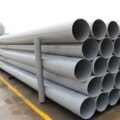average investment > Effortless Downtime Management: Securing Uninterrupted Manufacturing
Effortless Downtime Management: Securing Uninterrupted Manufacturing
Downtime is the perpetual adversary of manufacturing owners. It inflicts monetary losses, disrupts productivity, and jeopardizes reputation. Nonetheless, downtime need not spell catastrophe for your manufacturing operations. Prudent preparation can ensure the continuity of your production even during severe outages. In this article, we offer invaluable insights into how you can effortlessly circumvent downtime in manufacturing through effective downtime management.
Regular Maintenance and Updates
Downtime, a manufacturer’s worst nightmare, entails not only financial setbacks but also the risk of tarnishing customer relations when access to products or services is impeded. Among the most reliable strategies to prevent downtime is instituting routine production line maintenance.
Preemptive action is the key to averting potential outages and breakdowns. Keeping your systems up-to-date is an essential aspect of this. The trick lies in scheduling updates during operational lulls, thereby mitigating the impact on productivity.
How Frequently Should Maintenance and Updates Be Scheduled?
The frequency of maintenance and updates hinges on your specific production line. A mission-critical system necessitating uninterrupted operation around the clock requires more frequent updates. Conversely, lines with higher tolerance for downtime can accommodate less frequent updates.
However, as a general guideline, instituting monthly maintenance is sound practice to uphold optimal production efficiency. Notably, not all maintenance and updates need be simultaneous. Spreading them across various timeframes reduces potential disruptions.
For instance, consider a staggered approach. Schedule an update in the first week of the month, maintenance in the second week, another update in the third week, and so forth. This staggered regimen ensures seamless production while enabling the integration of the latest security enhancements and features.
Staggering maintenance and updates offers numerous advantages:
- Minimized Disruptions: Distributing maintenance and updates over time minimizes disturbances in the production line. Instead of prolonged downtimes, updates can be scheduled during off-peak hours or overnight, ensuring minimal impact on production.
- Enhanced Line Continuity: Regular updates safeguard against security breaches and performance lags. The staggered approach guarantees a continual minimum level of functionality while facilitating the utilization of the latest security upgrades.
- Enhanced Efficiency: Preplanned scheduling enables your IT staff to allocate their time efficiently, accommodating other projects, ultimately improving overall effectiveness.
- Stress Reduction: Staggered maintenance alleviates pressure on your IT personnel. Rather than a frantic rush within a narrow timeframe, the workload is dispersed over a more extended period, reducing stress.
- Cost Savings: Staggered maintenance and updates often yield cost savings due to the potential for discounts or bulk pricing on software updates. Furthermore, minimal disruptions result in preserved productivity and cost savings.
Comprehensive Backup Plans
In manufacturing, a robust backup plan is indispensable. A well-constructed contingency strategy allows swift restoration of operations, negating potential losses.
To devise an infallible plan, consider both digital and physical backups for your vital data. Proactive measures now will prove invaluable in times of crisis.
Digital Backups
In today’s digital age, secure remote data backups are more vital than ever. These backups ensure data preservation even in the face of system failures. Two primary types of digital backups are local and cloud-based.
Local backups are stored on external devices in secure locations, while cloud-based backups are maintained on servers operated by giants like Microsoft or Amazon, widely dispersed to reduce the risk of localized disasters.
Each digital backup approach has its merits and demerits, necessitating a careful evaluation before adoption. Whichever method you choose, it is imperative to routinely test the backups to confirm their reliability when needed most.
Physical Backups
In addition to digital backups, safeguarding vital documents in physical form is crucial. In the event of a disaster, these documents remain secure when stored in waterproof and fireproof safes.
Regular Systems Testing
Envision this scenario: in the midst of a workday, your production line halts unexpectedly during a critical phase. This serves as a prime example of how manufacturing downtime can severely impair productivity.
Thankfully, you can preempt such frustrations by consistently monitoring potential issues and employing machine downtime tracking systems to identify and rectify factors leading to unplanned downtime before it triggers a significant production halt.
Why is System Testing Essential?
There exist several compelling reasons for regularly testing your systems:
- Optimal Performance: Early identification of potential issues allows for prompt resolution before they degrade production line efficiency.
- Customer Satisfaction: Manufacturing downtime results in customers being unable to engage with your business effectively, resulting in frustration and potential loss of business. Regular system testing helps avert these negative customer experiences.
- Cost Savings: Downtime in manufacturing carries not only annoyance but also considerable financial repercussions. Cost savings over time can be realized by mitigating downtime.
Effective System Testing
Effective system testing should be carried out regularly and during planned production pauses. Here are some pointers for efficient system testing:
- Comprehensive Component Identification: Encompass all significant elements of your system, including carts, conveyor belts, totes & bins, and safety equipment.
- Detailed Test Case Development: Formulate comprehensive test cases that cover everything from functional testing to stress testing.
- Consistent and Frequent Testing: Depending on production scale and complexity, tests may need to be conducted daily, weekly, or monthly.
- Record Keeping: Maintain meticulous records of all test results to track potential issues and ascertain areas for improvement.
Conclusion
Downtime may be an inescapable facet of manufacturing, but it need not result in calamity. By adhering to a few straightforward procedures – scheduling regular maintenance and updates, constructing comprehensive backup plans, and consistently testing production systems – your manufacturing process can withstand even the most formidable of disruptions.




